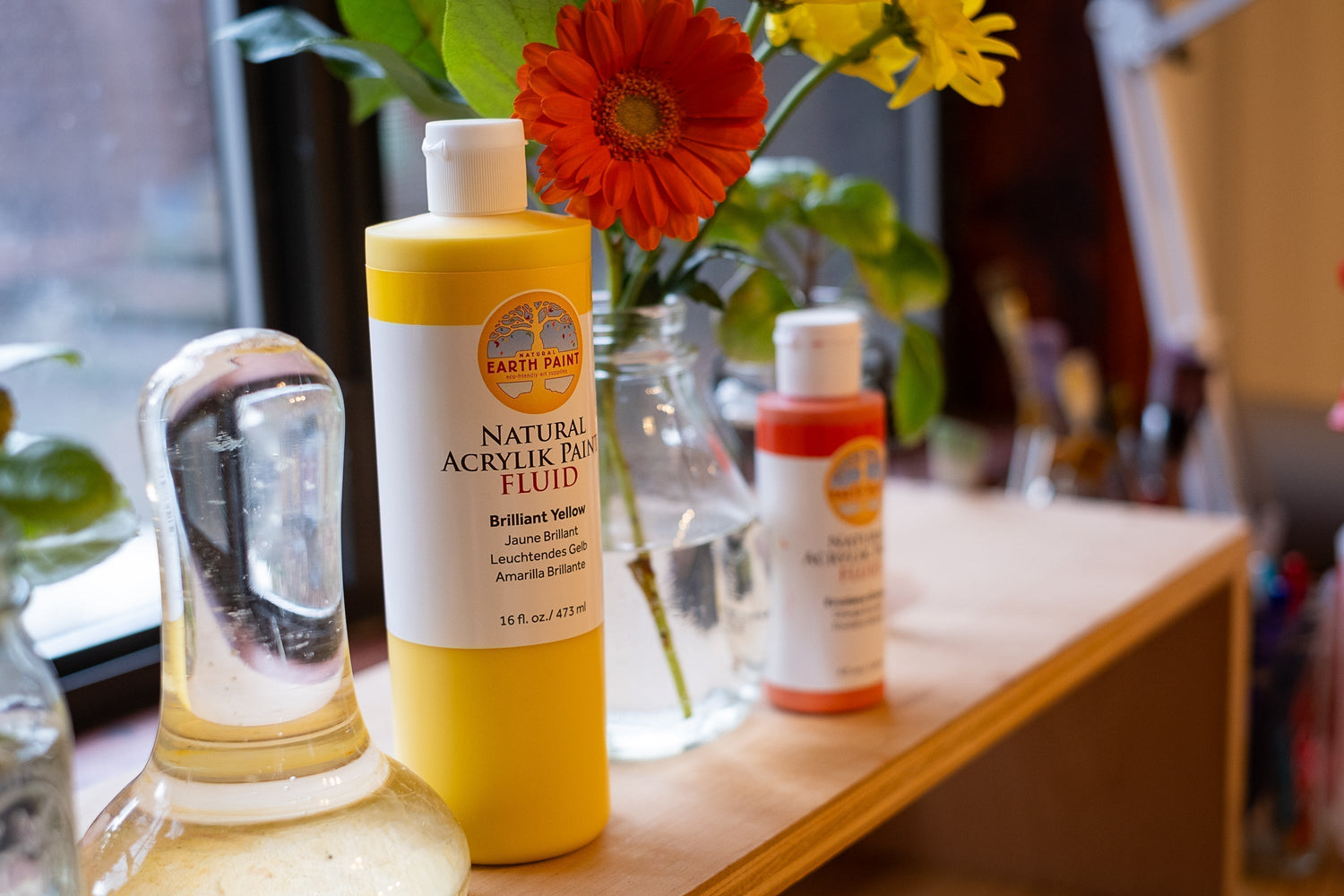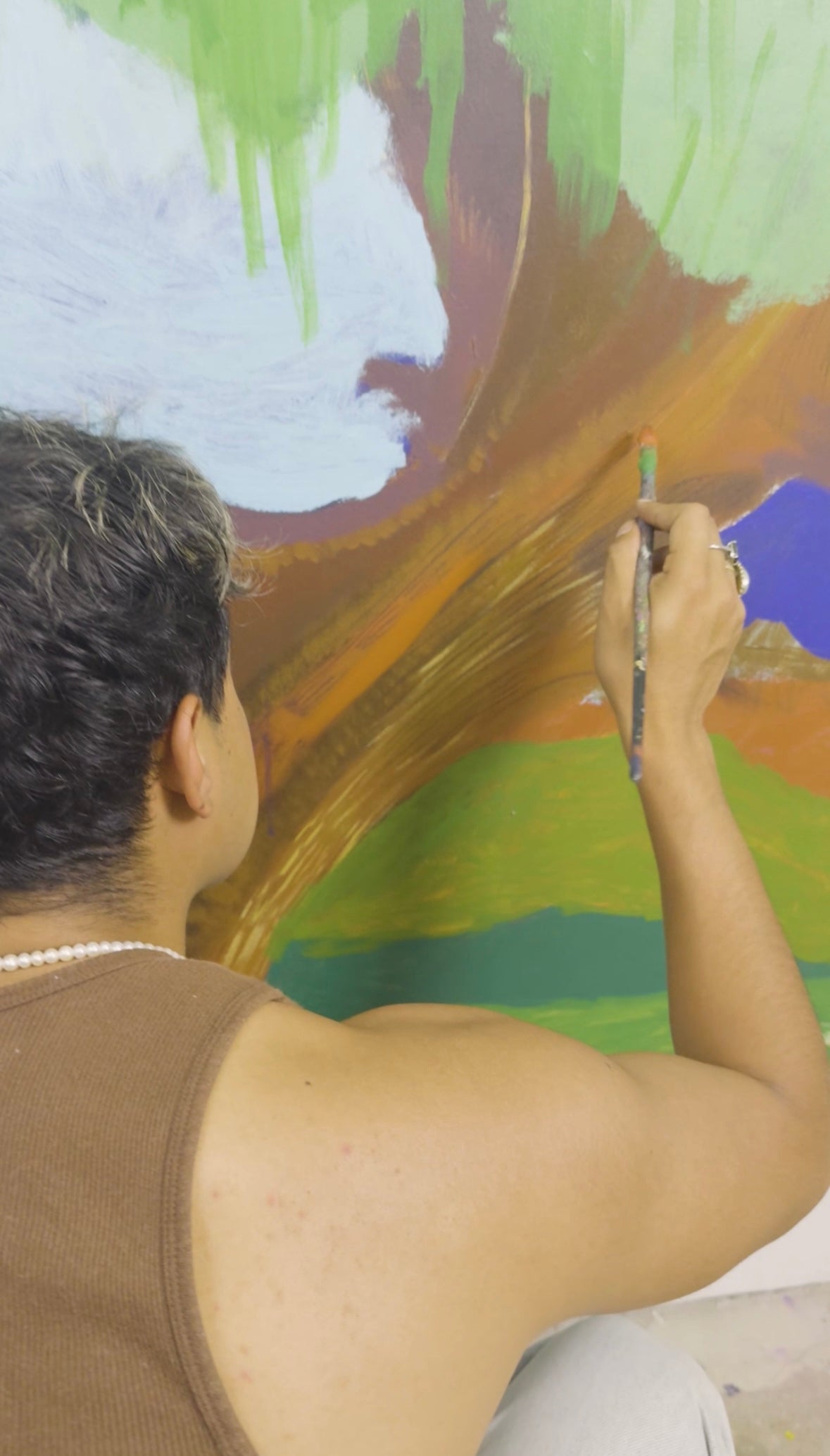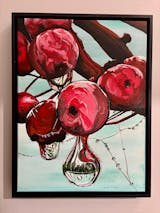Many artists feel overwhelmed when they learn about the harmful toxicity in their art supplies, and either can't afford to buy all new supplies or don't know where to start! Or they may worry that non-toxic and natural supplies won’t be as radiant, archival or professional quality. The task of swapping out harmful supplies for natural and non-toxic can feel daunting, but don't worry, we've narrowed it down for you so you can make a slow transition. FREE PRINT-ABLE PDF GUIDE at the end of this post.

Here are the 5 most important steps to take and supplies that you should swap out for your health and the health of the planet while also producing the highest caliber, professional quality art.

STEP 1: REMOVE HEAVY-METAL BASED PIGMENTS (and the paints that contain them):
Heavy metal and carcinogenic pigments or paints can be easily replaced with similar non-toxic hues that are just as archival and radiant.
Why?
Cadmiums, cobalts and many others are very harmful heavy metal pigments and carcinogens and can lead to serious health issues such as lung cancer, kidney damage, and bone degradation. Chronic exposure can cause respiratory problems and other systemic effects. For example, lead is a potent neurotoxin that can cause a range of health issues, including neurological damage, kidney problems, and developmental issues in children. All types of paints are offered in these colors with these pigments (watercolor, gouache, oil, acrylic and ink) and can easily be avoided.
By switching to natural, earth pigments or non-toxic, organic pigments and mixing your own paints, you avoid all heavy metals, fillers, solvents, preservatives, toxic driers, and additives while ending up with pure, archival, and radiant paint. To learn about my experience trying to detox heavy metals from my body 20 years after art school (plus daily detox tips for artists) read here. If you don't want to mix your own paints you can still buy ready-made paints without these toxins - read on ....
How?

Remove: Cadmium Red, Yellow & Orange, Chrome Orange & Yellow, Cobalt Violet, Cobalt Yellow, Lead or Flake White, Manganese Violet & Blue, Naples Yellow, Strontium Yellow, Vermillion, Cerulean Blue, Cobalt Blue & Green, Alizarin Crimson, and Viridian.
Replace: Cadmium Red with Mayan Red Pigment or Scarlet Red Natural Acrylik Paint; Replace Cadmium Orange with Ercolano Orange Natural Acrylik Paint; Replace Cadmium Yellow with Brilliant Yellow Pigment or Acrylik Paint; Replace Lead White with Titanium White Rutile. Or opt for a more earthy palette from natural pigments.
There’s nothing more inspiring and beautiful than a row of colorful pigments in glass jars ready to be scooped and transformed into dozens of different types of paint or supplies.

STEP 2: REMOVE MINERAL SPIRITS (ODORLESS & REGULAR):
Mineral Spirits contain volatile organic compounds (VOCs) and carcinogens that can cause respiratory issues, headaches, dizziness, and long-term damage to the liver and kidneys and ultimately cancer.
Why?
This is THE most important item to swap out for oil painters that could potentially save your life. For any solvent or mineral spirit that you see that says “Odorless”, that does not mean that it’s less toxic at all, it only means it has less odor. I have interviewed countless professional artists over the past 12 years who have had severe health problems ranging from respiratory issues to near-death because of OMS. Here's one interview with acclaimed artist, Roberto Parada, whose use of OMS almost ended his life.
All paint thinners evaporate into the air and you then inhale and absorb the off-gassing chemicals, including benzene. Benzene is an odorless carcinogen (commonly in petroleum products). Benzene can do huge amounts of damage including causing cancer. You absorb the benzene through your nose, skin, and eyes, which most people don’t realize, and it goes directly into your bloodstream. Wearing a full respirator mask will not protect you. When benzene gets into your bloodstream and bone marrow (where you make your blood) then your white count lowers and that’s where the serious problems start.
How?

Replace with Eco-solve – 100% plant-based, archival and professional quality solvent that not only cleans and restores your brushes but thins your paint. Perfect for underpaintings, washes, drips and more.
STEP 3: REMOVE CONVENTIONAL ACRYLIC PAINT:
Acrylic Paints are the most commonly used paints on the planet and most people don’t realize that they are the most toxic and most harmful to our health and the environment.
Why?
Acrylic paints are not only petroleum-based, but contain a host of carcinogenic additives that give the paint different handling properties and shelf stability. The additives off-gas and are breathed into the lungs as the paint dries, and also enter the bloodstream if they get on skin. They poison our water supply when washed down the drain and create microplastics in our environment. For more details on what is in acrylic paint, read our blog post: Is Acrylic Paint Really Toxic?

How? Replace with Natural Acrylik Paints - Plant-based, professional quality and free of all hazardous additives. This paint behaves exactly like conventional acrylic paint and is just as archival, durable and radiant. These can be slowly incorporated into your current collection of acrylic paints as you run out of colors as they are 100% compatible and mix perfectly.

STEP 4: REMOVE CONVENTIONAL VARNISH:
All mainstream varnishes contain hazardous solvents and require us to wear a mask and create air pollution in our studios and homes.

Why?
All artist and woodworking varnishes contain either toxic solvents or petrochemicals that off-gas harsh pollutants as they dry causing a variety of health problems while polluting the Earth. Even “Zero VOC” varnishes will contain acrylic polymer, which is a type of plastic. See health problems caused by solvents above.
How?
Replace with Natural Varnish - 100% non-toxic, made from all natural ingredients, and seals all surfaces.

Professional quality and archival while bringing an unsurpassed radiance, richness and protection to paintings and wood. Check out internationally acclaimed artist, Ricky Lee Gordon, who uses the Natural Varnish exclusively on all of his large-scale paintings as well as how artist Melissa Jenkins uses Natural Varnish on her miniature paintings.
STEP 5: REMOVE ACRYLIC GESSO:

Why?
Acrylic gesso, the most commonly used artist primer used today, is similar to acrylic paint in that it’s made with a petroleum-based resin and also contains a variety of carcinogenic additives including ammonia and formaldehyde as preservatives. It off-gasses these fumes and also enters the bloodstream if on the skin.
How?
Replace with Eco Gesso – plant and mineral-based, the Eco Gesso is an exact replica of traditional gesso recipes from the Renaissance except instead of rabbit skin glue, it contains methyl cellulose (plant fiber glue).

Download or Print a FREE PDF GUIDE or share with a friend!








